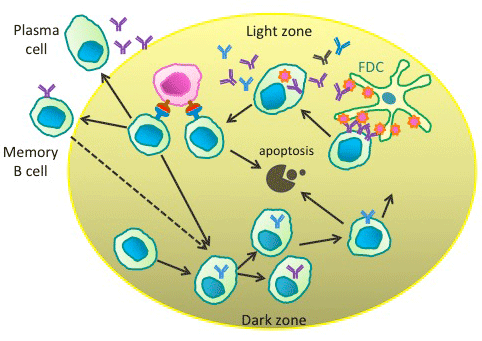
DAMPT, Cambridge Biolunch seminar December 14, 2023
Affinity maturation of antibodies targeting HIV spikes

Assaf Amitai Shenshen Wang Arup K. Chakraborty
Mehran Kardar (MIT)
Outline
I. Introduction: B cells, Antibodies, Antigens, and the puzzle of low HIV spike density
II. Affinity Maturation: Germinal Center, Rapid evolution of antibodies, Fisher and Price equations
III. Fitness & Evolution: Competition for virus capture and proliferation signal from helper T cells
IV. Optimal density for eliciting potent antibodies; implications for nanoparticle vaccination & HIV spikes
V. Broadly neutralizing Antibodies: Controlling affinity maturation against a mutable virus
VI. Affinity Maturation with Multiple Antigens
VII. Summary
Affinity maturation (AM) is the process through which the immune system evolves antibodies (Abs) which efficiently bind to antigens (Ags), e.g. to spikes on the surface of a virus. This process involves competition between B-cells: those that ingest more Ags receive signals (from T helper cells) to replicate and mutate for another round of competition. Modeling this process, we find that the affinity of the resulting Abs is a non-monotonic function of the target (e.g. viral spike) density, with the strongest binding at an intermediate density (set by the two-arm structure of the antibody). We argue that, to evade the immune system, most viruses evolve high spike densities (SDs). An exception is HIV whose SD is two orders of magnitude lower than other viruses. However, HIV also interferes with AM by depleting T helper cells, a key component of Ab evolution. We find that T helper cell depletion results in high affinity antibodies when SD is high, but not if SD is low. This special feature of HIV infection may have led to the evolution of a low SD to avoid potent immune responses early on in infection. Our modeling also provides guides for design of vaccination strategies against rapidly mutating viruses.